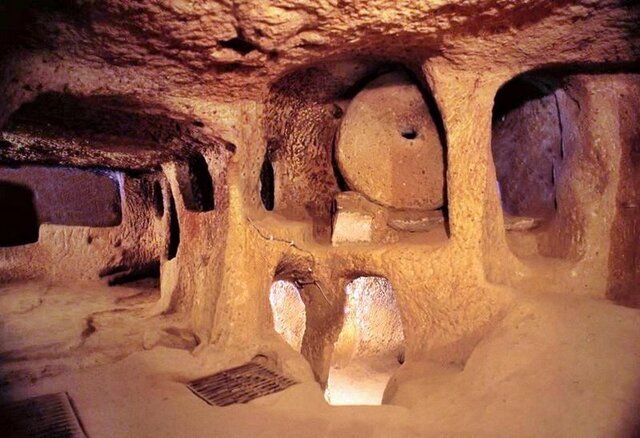Underground city set to welcome visitors for very first time

TEHRAN – As the countdown to welcome Nowruz [Persian new year’s celebration] has started, the ancient underground city of ‘Samen’, situated in Iran’s Malayer, is set to open its doors to the public during the approaching holidays for the very first time.
Hamedan’s deputy tourism chief, in a recent interview with ISNA, disclosed that after 18 years of waiting, the underground city of Samen which bosting historical roots dating back to the Parthian period is poised to host sightseers.
Regarding the preparedness level of the touristic sites within the province, Ali Khaksar outlined that dozens of licensed tour leaders are arranged to be stationed in various historical sites, ensuring continuous service.
Khaksar also emphasized that cultural events will take place daily in most attractions across all counties of Hamedan province along the course of Nowruz.
“Key sites like the tombs of Bu-Ali and Baba Taher, as well as Hegmataneh Hill,” the official noted, “are expected to host diverse morning and afternoon programs.”
Predicting a significant influx of travelers to the province during Nowruz, Khaksar assured that all hotels, accommodation centers, and hospitality establishments across the province are prepared to host the holidaymakers in the best possible way.
The ancient underground city of Samen spans approximately three hectares and is located in the southwest of Malayer county, within the city of Samen. Discovered by chance in 2005, archaeologists believe its core dates back to pre-Achaemenid times, with expansions made throughout history.
Furthermore, the historical artifacts of Samen demonstrate the city's antiquity, which brings to light how precious is the ancient subterranean city.
It’s noteworthy that, on October 2023, Hamedan’s tourism chief said “We are doing our best to implement all the needed necessary protocols and safety procedures inside the Samen underground city to make it ready to host visitors during the Nowruz holidays.”
The handmade troglodytic architecture is a distinctive kind of architecture,, which does not require major construction materials and consequently, very low environmental load, since its creation is majorly by extraction of space rather than the addition of mass. Architecture by subtraction rather than addition, provides many opportunities that call for comprehensive research and analysis.
As there is no obligatory method for making spaces rather than material cohesion, there is no priority in constructing a troglodytic structure, either from the roof or from the floor. Dealing with stone blocks, rocks, and piles of the earth requires a variety of tools such as an ax, hammer, chisel, and sledgehammer to shape the interior space.
In Iran, many magnificent cases of this architecture have taken place in different regions due to its various climates. This unique architecture is at odds with the conventional settlement patterns and construction methods, and it can always take advantage of the mountains and valleys on the floor or wall, which is a good way to control climate fluctuations in different regions.
Iran is a haven for ancient troglodytic architecture which is somewhat forgotten though it is filled with life and creativity. The northwest Kandovan village is one of the most famous examples of troglodytic architecture in the country; its ice-cream cone-shaped homes resemble those of Turkey’s Cappadocia.
In October 2018, the country hosted the 3rd International Troglodytic Architecture Conference in which tens of experts, researchers, and academia discussed troglodyte-associated architecture, culture, and technology.
Leave a Comment